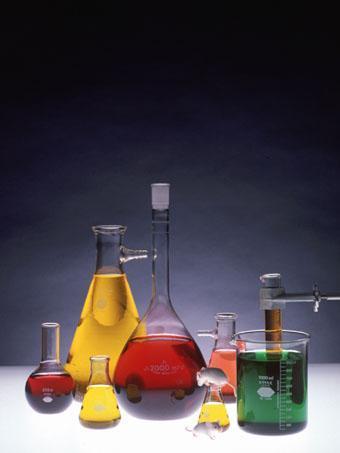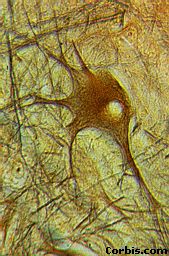|
PART1: CHEMICAL EFFECTS ON INTERPERSONAL RELATIONS |
|||
|
SIMULATING “THE URGE TO LOVE" |
|||
|
Image by Steve Graydon |
|||
| In the following section I explore the chemical effects on interpersonal relations. In doing so I look at the effects of Ecstasy on interpersonal relations. Also, I examine pheromone influence on insect breeding behaviors in the sub-section titled “Love Molecules. ” I also examine pheromones in context of Menstrual Cycle Synchronization for further demonstration of chemical effects on behavior. | |||
|
Part 1: Section 1 |
|||
|
ECSTASY |
|||
| A recent article in New York Times titled “ Experiencing Ecstasy ,” was quite perplexing and was actually directly related to my research. Ecstasy produced feelings normally associated with love. Also, this particular drug seemed to be quite “special”: | |||
|
|||
| It is remarkable to imagine that each of us is able “to rise inside,” overcome the barriers of all negative feelings, and to love to our outermost capacity with some help from the little white pill. I read more about these accounts and found that most of them had an overriding theme of the experience of closeness, love, and peace. However, the accounts were very case specific: A writer finds a muse years lost, a girl learns how to love herself and others, a religious man finally achieves “spiritual expansion,” a couple is able to exchange sexual roles as if having their partner’s body, and the list goes on and on. | |||
| But there are also negative experiences associated with the use of ecstasy, although they are documented much less. For example, a user describes his state after a trip on ecstasy: “for the next couple of days afterwards I was an emotional wreck, paranoid as hell, shaking, involuntary muscle spasms, and my tonsillitis came back.” After a similar negative experience, another user who actually had to stop taking ecstasy because of the detrimental side effects it produced, comments: “It’s just a pity that people can’t feel like they do on Ecstasy, naturally.” | |||
| It is important to note that “urge to love” is elevated only in some people while in others, the substance may cause a completely different reaction. One conclusion that can be drawn is that: | |||
|
CHEMICALS EFFECT INTERPERSONAL RELATIONSHIPS |
|||
| Note that the above statement is rather broad and I would like to leave it as such primarily because the prevailing theory of HOW ecstasy affects interpersonal relationships is by no means complete. If we are to get a step closer to understanding the truth behind the neurobiological theory which explains the effects of ecstasy, we should explore not only how many things we can account for in terms of the theory, but also how many things we can account for without it. This is the subject of PART 2 . For now, I turn to outlining the popular theory which accounts for the effects of ecstasy. | |||
|
CHEMISTRY AT WORK |
|||
| Ecstasy, also clinically known as Methhylenedioxymethanphetamine or MDMA, can be swallowed, smoked or injected. Once the drug enters the body it goes through extraction by the liver and then reaches the circulatory system and is transmitted through the blood vessel wall to the place where it does its job - the brain. The drug is dispersed into other parts of the body but there it has no pharmacological activity. | |||
| From research on rats, scientists hypothesize that MDMA promotes significant release of serotonin from vesicles . In normal circumstances, the brain has strict control over the amount of serotonin circulating among the neurons. Only a special subset of neurons have the ability to release or respond to serotonin. And even they exercise restraint by having special serotonin transporter proteins which pump it out of the synapse and back into the neuron shortly after it is released. The main effect of ecstasy in rats is to prevent the return of serotonin to neurons by occupying their binding sites on the transporter proteins, effectively preventing serotonin re-uptake. As a result, serotonin levels rise sharply when MDMA is occupying the binding sites, and the signaling between the neurons is amplified. However, the produced “high,” which is thought to be caused by an increase in serotonin levels, eventually fades when the neurons are drained of all their serotonin stores. A number of researchers speculate that this depletion of serotonin may cause the psychological “crash” which is experienced by some users. | |||
|
Neuron © Corbis.com |
|||
| Researchers generalized the task of serotonin to that of modification of responses of neurons to a range of other neurotransmitters. This could point to a theory why serotonin could potentially influence the most subtle and most encompassing of human attributes - mood. If we assume that behavior is controlled by various chemical reactions in the brain and the communication pathways involve and are influenced by various chemicals that are produced, then if serotonin fine-tunes responses of neurons to other neurotransmitters, it can potentially influence behavior. Also, serotonin is made up of groups of neurons, which emit axons that enervate other neurons throughout the entire nervous system. Neurons communicate through electrical signals, which travel between their axons. The fact that anatomically serotonin can send signals to various neurons can account for its role in mood regulation. For example, serotonin’s axons reach neurons in the cortex, an area of the brain which is thought to account for thinking and creative functions, the mid brain which controls appetite, and the hypothalamus, which is involved with hormonal functioning of the entire body. Animal studies also show that serotonin interacts with certain sex hormones to orchestrate sexual behavior. This can be correlated with various sexual effects of ecstasy. | |||
| LINKS on ECSTASY | |||
|
New York Times Article on Ecstasy
Top ten Ecstasy links picked by New York Times Editors can be found
here
Experiences of Ecstasy
Various accounts of trips listed in an index
Too many pills - a personal account of ecstasy user
Disillusionment- a personal account of ecstasy user
Team Project on the WWW for the Biological Bases of Behavior-1998
A trip into the unknown, illicit drug ecstasy
The Harvard Mahoney Neuroscience Institute Letter
Neurotransmitter of the ‘90s: serotonin production
Novartis Foundation Meeting |
|||



